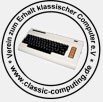Hallo!
Wie bereits geschrieben, erkennt meine KISS nach dem Tausch des CRT 5027 ICs von einer P2 Karte die 16kB SRAM Karte nicht mehr.
Ohne SRAM Karte (MC80 1010E 12 811 187, 80-10-5, K18.00.330-E) läuft sie, siehe auch : About TMS9927/5027 internals
Wahrscheinlich hat das eine mit dem anderen nichts zu tun. Wie auch immer, die Vermutung liegt nahe, daß der Fehler auf der SRam Karte zu suchen ist.
Jetzt habe ich mir die Karte heute einmal angesehen und begonnen, die ICs auszulöten und in slabbi s genialem Speichertester zu prüfen.
Bisher habe ich sieben (7 !!! ) defekte 2114 1024kx4 SRAM gefunden.
Das könnte erklären, daß die von helwie44 † freundlicherweise zur Verfügung gestellte SKS Systembibliothek Inbetriebnahme SKS KISS II 2116 nicht funktioniert, weil der Speicher teildefekt war?
Weiterhin habe ich 2 Tantalen gefunden mit > 30 Ohm ESR.
Soll ich wieder Tantal-Kondensatoren einlöten, oder tun es auch Elkos mit gleicher Kapazität? Dieser Thread hier deutet darauf hin, daß man das durchaus machen kann https://www.mikrocontroller.net/topic/169958 Normale Elkos explodieren wenigstens nicht.


